tags
annual black blossoms blue border bulb buttercup carpet climber cluster creeper cultivar daisy daisy-like edible endangered flower flowering fragrant genus rhododendron grassland hanging hedges and fences herb herbaceous and tree large blooms lila mauve Merry Christmas naturalising orange ornamenal pale yellow parrot peach perennial ph pink plants purple red rose salad green self-seeding showy shrub small florets soil spring spring to fall succulent temperate tree tri-colour blooms variegated weed white wildflower woody yellowMay 2024 M T W T F S S 1 2 3 4 5 6 7 8 9 10 11 12 13 14 15 16 17 18 19 20 21 22 23 24 25 26 27 28 29 30 31 -
Newly Added
- Merry Christmas
- Crassulaceae, – Hens and Chicks
- Succulent Plants
- Catalpa speciosa
- Salix Hakuro Nishiki
- Tropaeolum – Nasturtium
- Arugula
- Datura stramonium – Jimson Weed
- Taraxacum officinale – Dandelion
- Ranunculus – Buttercup etc.
- Gardenia
- Sweet Pea
- Lily – Lilium
- Flax – Perennial, Linum Perenne Lewsii
- Pinks – Dianthus
Blog Stats
- 12,766 hits
about this project
Realizing there is a need for an all encompassing gardener’s flora containing not just local but all varieties worldwide, cultivated or wild, this was set up to become just such a reference. Anyone who would like to take part and add in some entries of their favourite flora, or add to existing entires with additional facts or myths/beliefs is most welcome to do so. Just contact me by email and I’ll have you added as a contributor. Bear in mind photos do need to be your property to post them here. email: blogs@aletta.orgcomments
aletta mes on Narcissus aletta mes on Gazania – wildflower susan preston on Lysimachia nummularia ‘A… susan preston on Gazania – wildflower susan preston on Gazania – wildflower posts
- December 2014 (1)
- June 2014 (25)
- May 2013 (5)
- August 2010 (3)
- August 2008 (1)
- July 2008 (6)
- June 2008 (3)
my Flickr Photos
Hen and chicks (also known as hen-and-chickens, or hen-and-biddies in the American South) is a common name for a group of small succulent plants belonging to the flowering plant family Crassulaceae, native to Europe and northern Africa. They grow close to the ground with leaves formed around each other in a rosette, and propagating by offsets. The “hen” is the main plant, and the “chicks” are the offspring, which start as tiny buds on the main plant and soon sprout their own roots, taking up residence close to the mother plant.
Hen and chicks is also the popular name of a strain of opium poppy, Papaver somniferum, in which the seed head is surrounded by clusters of smaller heads, and is the common name of Chlorophytum comosum from South Africa.
Other types
Plants commonly referred to as “Hens and chicks” include ground hugging species of Sempervivum (houseleeks) such as Sempervivum Pekinese, Sempervivum arachnoideum (cobweb houseleek), and Sempervivum tectorum (common houseleek); and the related genus Jovibarba. The name is also used for some species of Echeveria, Sedum and Bergenia although these plants differ significantly from, and should not be confused with, Sempervivum and Jovibarba. The description below provides characteristics of Sempervivum and Jovibarba only.
Care
Hen and chicks is popular in gardens for its varied and interesting appearance and hardiness. It is grown as container planting or in rock gardens. It does best in well-drained, rocky soil; if they are kept wet, the outer leaves will rot. Although it does best in sun, it will grow in light shade.
Not to be confused with cactus; botanically cacti are succulents but not all succulents are cacti. Succulent plants, such as this Aloe, store water in their fleshy leaves
In botany, succulent plants, also known as succulents or sometimes fat plants, are plants having some parts that are more than normally thickened and fleshy, usually to retain water in arid climates or soil conditions. Succulent plants may store water in various structures, such as leaves and stems. Some definitions also include roots, so that geophytes that survive unfavorable periods by dying back to underground storage organs may be regarded as succulents. In horticultural use, the term “succulent” is often used in a way which excludes plants that botanists would regard as succulents, such as cacti. Succulents are grown as ornamental plants because of their striking and unusual appearance.
Definition
There are a number of somewhat different definitions of the term succulent. One difference lies in whether or not roots are included in the parts of a plant which make it a succulent. Some authors include roots, as in the definition “plants in which the leaves, stem or roots have become more than usually fleshy by the development of water-storing tissue.” Others exclude roots, as in the definition “a plant with thick, fleshy and swollen stems and/or leaves, adapted to dry environments”. This difference affects the relationship between succulents and “geophytes” – plants that survive unfavorable seasons as a resting bud on an underground organ. These underground organs, such as bulbs, corms and tubers, are often fleshy with water-storing tissues. Thus if roots are included in the definition, many geophytes would be classed as succulents.
Plants adapted to living in dry environments are termed xerophytes; thus succulents are often xerophytes. However, not all xerophytes are succulents, since there are other ways of adapting to a shortage of water, e.g. by developing small leaves which may roll up or having leathery rather than succulent leaves. Nor are all succulents xerophytes, since plants like Crassula helmsii are both succulent and aquatic.
Those who grow succulents as a hobby use the term in a different way to botanists. In horticultural use, the term succulent regularly excludes cacti. For example, Jacobsen’s three volume Handbook of Succulent Plants does not cover cacti, and “cacti and succulents” is the title or part of the title of many books covering the cultivation of these plants. However, in botanical terminology, cacti are succulents. Horticulturists may also exclude other groups of plants, e.g. bromeliads. A practical, but unscientific, horticultural definition is “a succulent plant is any desert plant that a succulent plant collector wishes to grow”. Such plants less often include geophytes (in which the swollen storage organ is wholly underground) but do include plants with a caudex, which is a swollen above-ground organ at soil level, formed from a stem, a root or both.
A further difficulty is that plants are not either succulent or non-succulent. In many genera and families there is a continuous sequence from plants with thin leaves and normal stems to those with very clearly thickened and fleshy leaves or stems, so that deciding what is a succulent is often arbitrary. Different sources may classify the same plant differently.
Appearance
The storage of water often gives succulent plants a more swollen or fleshy appearance than other plants, a characteristic known as succulence. In addition to succulence, succulent plants variously have other water-saving features. These may include:
- Crassulacean acid metabolism (CAM) to minimize water loss
- absent, reduced, or cylindrical-to-spherical leaves
- reduction in the number of stomata
- stems as the main site of photosynthesis, rather than leaves
- compact, reduced, cushion-like, columnar, or spherical growth form
- ribs enabling rapid increases in plant volume and decreasing surface area exposed to the sun
- waxy, hairy, or spiny outer surface to create a humid micro-habitat around the plant, which reduces air movement near the surface of the plant, and thereby reduces water loss and creates shade
- roots very near the surface of the soil, so they are able to take up moisture from very small showers or even from heavy dew
- ability to remain plump and full of water even with high internal temperatures (e.g. 52 °C or 126 °F)
- very impervious outer cuticle (skin)
- mucilaginous substances, which retain water abundantly
Habitat
Many succulents come from the dry areas of the tropics and subtropics, such as steppes, semi-desert, and desert. High temperatures and low precipitation force plants to collect and store water to survive long dry periods. Succulents may occasionally occur as epiphytes – “air plants” – as they have limited or no contact with the ground, and are dependent on their ability to store water and gain nutrients by other means; this niche is seen in Tillandsia. Succulents also occur as inhabitants of sea coasts and dry lakes, which are exposed to high levels of dissolved minerals that are deadly to many other plant species.
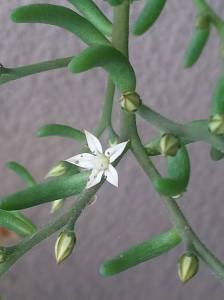 Evolution
Evolution
The best-known succulents are cacti (family: Cactaceae). Virtually all cacti are succulents, but not all succulents are cacti. A unique feature of cacti is the possession of areoles, structures from which spines and flowers are produced.
To differentiate between these two basic types that seem so similar, but that are unrelated succulent plants, use of the terms, cactus or cacti, only should be used to describe succulents in the cactus family. Popular collection of these types of plants has led to many Old World plants becoming established in the wild in the New World, and vice versa.
Plant families and genera in which succulent species occur are listed below.
Order Alismatales
Order Apiales
Order Asparagales
- Amaryllidaceae (geophytes): Ammocharis, Apodolirion, Boophone, Brunsvigia, Crinum, Crossyne, Cryptostephanus, Cyrtanthus, Gethyllis, Habranthus, Haemanthus, Hessea, Nerine, Pancratium, Rauhia, Scadoxus, Strumaria, Zephyranthes,
- Asparagaceae
- subfamily Agavoideae: Agave, Beschorneria, Chlorophytum, Furcraea, Hesperaloe, Hesperoyucca, Yucca
- subfamily Asparagoideae: Asparagus
- subfamily Lomandroideae: Cordyline,
- subfamily Nolinoideae: Beaucarnea, Calibanus, Dasylirion, Dracaena, Nolina, Sansevieria, Eriospermum
- subfamily Scilloideae: Albuca, Bowiea, Daubenya, Dipcadi, Drimia, Drimiopsis, Eucomis, Hyacinthus, Lachenalia, Ledebouria, Litanthus, Massonia, Merwilla, Namophila, Ornithogalum, Pseudogaltonia, Pseudoprospero, Resnova, Schizobasis, Schizocarphus, Spetaea, Veltheimia
- Iridaceae (geophytes): Babiana, Chasmanthe, Crocosmia, Devia, Dierama, Dietes, Duthiastrum, Ferraria, Freesia, Geissorhiza, Gladiolus, Hesperantha, Ixia, Lapeirousia, Melasphaerula, Micranthus, Moraea, Pillansia, Radinosiphon, Romulea, Sparaxis, Syringodea, Thereianthus, Tritonia, Tritoniopsis, Watsonia, Xenoscapa
- Orchidaceae (succulents) Acampe, Aerangis, Ansellia, Bolusiella, Bulbophyllum, Calanthe, Cyrtorchis, Oberonia, Polystachya, Tridactyle, Vanilla
-
- (succulent geophytes) Eulophia, Liparis, Oeceoclades
- (geophytes) Acroliphia, Bartholina, Bonatea, Brachycorythis, Brownleea, Centrostigma, Ceratandra, Corycium, Cynorkis, Didymoplexis, Disa, Disperis, Dracomonticola, Eulophia, Evotella, Gastrodia, Habernaria, Holothrix, Huttonaea, Neobolusia, Nervilia, Plicosepalus, Pachites, Platycoryne
-
- subfamily Epidendroideae Phalaenopsis
- Xanthorrhoeaceae
- subfamily Asphodeloideae: Aloe (succulents and succulent geophytes), Astroloba, × Astroworthia, Bulbine (succulent geophytes, succulents, and geophytes), Bulbinella (geophyte), Chortolirion (succulent geophytes), Gasteria, Haworthia, Trachyandra (succulent geophytes and succulents),
- subfamily Xanothorrhoeoidae: Xanthorrhoea
Order Asterales
- Asteraceae: Arctotheca, Baeriopsis, Chrysanthemoides, Coulterella, Crassocephalum, Didelta, Emilia, Eremothamnus, Gymnodiscus, Gynura, Hillardiella (geophyte), Lopholaena, Monoculus, Nidorella, Osteospermum, Othonna (succulents and succulent geophytes), Phaneroglossa, Poecilolepis, Polyachyrus, Pteronia, Senecio, Solanecio,Tripteris
Order Brassicales
Order Caryophyllales
- Aizoaceae: Corbichonia, Gisekia, Herreanthus, Limeum, Ophthalmophyllum, Saphesia
- subfamily Aizooideae: Acrosanthes, Aizoanthemum, Aizoon, Galenia, Gunniopsis, Plinthus, Tetragonia
- subfamily Mesembryanthemoideae (syn. Mesembryanthemaceae[15]): Aptenia, Aridaria, Aspazoma, Brownanthus, Calamophyllum, Caulipsilon, Conophytum, Dactylopsis, Erepsia, Hameria, Hartmanthus, Hymenogyne, Marlothistela, Mesembryanthemum, Phiambolia, Phyllobolus, Prenia, Psilocaulon, Ruschiella, Sarozona, Sceletium, Synaptophyllum
- subfamily Ruschioideae:
- tribe Apatesieae: Apatesia, Carpanthea, Caryotophora, Conicosia, Hymenogyne, Saphesia, Skiatophytum
- tribe Dorotheantheae: Aethephyllum Cleretum Dorotheanthus
- tribe Ruschiae: Acrodon, Aloinopsis, Amphibolia, Antegibbaeum, Antimima, Arenifera, Argyroderma, Astridia, Bergeranthus, Bijlia, Braunsia, Brianhuntleya, Carpobrotus, Carruanthus, Cephalophyllum, Cerochlamys, Chasmatophyllum, Cheiridopsis, Circandra, Conophytum, Corpuscularia, Cylindrophyllum, Delosperma, Dicrocaulon, Didymaotus, Dinteranthus, Diplosoma, Disphyma, Dracophilus, Drosanthemum, Eberlanzia, Ebracteola, Enarganthe, Erepsia, Esterhuysenia, Faucaria, Fenestraria, Frithia, Gibbaeum, Glottiphyllum, Hallianthus, Hereroa, Ihlenfeldtia, Imitaria, Jacobsenia, Jensenobotrya, Jordaaniella, Juttadinteria, Khadia, Lampranthus, Lapidaria (plant), Leipoldtia, Lithops, Machairophyllum, Malephora, Mestoklema, Meyerophytum, Mitrophyllum, Monilaria, Mossia, Muiria, Namaquanthus, Namibia, Nananthus, Nelia, Neohenricia, Octopoma, Odontophorus, Oophytum, Ophthalmophyllum, Orthopterum, Oscularia, Ottosonderia, Pleiospilos, Polymita, Psammophora, Rabiea, Rhinephyllum, Rhombophyllum, Ruschia, Ruschianthemum, Ruschianthus, Schlechteranthus, Schwantesia, Scopelogena, Smicrostigma, Stayneria, Stoeberia, Stomatium Tanquana Titanopsis, Trichodiadema, Vanheerdea, Vanzijlia, Vlokia, Wooleya, Zeuktophyllum
- subfamily Sesuvioideae: Cypselea, Sesuvium, Trianthema, Tribulocarpus, Zaleya
- Amaranthaceae:
- subfamily Amaranthoideae: Arthraerva
- subfamily Chenopodioideae (family Chenopodiaceae):[16]) Atriplex, Chenopodium, Dissocarpus, Einadia, Enchylaena, Eremophea, Halopeplis, Maireana, Malacocera, Neobassia, Osteocarpum, Rhagodia, Roycea, Halosarcia, Salicornia, Salsola, Sarcocornia, Sclerochlamys, Sclerolaena, Suaeda, Tecticornia, Threlkeldia
- Cactaceae: Acanthocalycium, Acanthocereus, Ariocarpus, Armatocereus, Arrojadoa, Arthrocereus, Astrophytum, Austrocactus, Aztekium, Bergerocactus, Blossfeldia, Brachycereus, Browningia, Brasilicereus, Calymmanthium, Carnegiea, Cephalocereus, Cephalocleistocactus, Cereus, Cintia, Cipocereus, Cleistocactus, Coleocephalocereus, Copiapoa, Corryocactus, Coryphantha, Dendrocereus, Denmoza, Discocactus, Disocactus, Echinocactus, Echinocereus, Echinopsis, Epiphyllum, Epithelantha, Eriosyce, Escobaria, Escontria, Espostoa, Espostoopsis, Eulychnia, Facheiroa, Ferocactus, Frailea, Geohintonia, Gymnocalycium, Haageocereus, Harrisia, Hatiora, Hylocereus, Jasminocereus, Lasiocereus, Leocereus, Lepismium, Leptocereus, Leuchtenbergia, Lophophora, Maihuenia, Malacocarpus, Mammillaria, Mammilloydia, Matucana, Melocactus, Micranthocereus, Mila, Monvillea, Myrtillocactus, Neobuxbaumia, Neolloydia, Neoraimondia, Neowerdermannia, Obregonia, Opuntia, Oreocereus, Oroya, Ortegocactus, Pachycereus, Parodia, Pediocactus, Pelecyphora, Peniocereus, Pereskia, Pereskiopsis, Pilosocereus, Polaskia, Praecereus, Pseudoacanthocereus, Pseudorhipsalis, Pterocactus, Pygmaeocereus, Quiabentia, Rauhocereus, Rebutia, Rhipsalis, Samaipaticereus, Schlumbergera, Sclerocactus, Selenicereus, Stenocactus, Stenocereus, Stephanocereus, Stetsonia, Strombocactus, Tacinga, Thelocactus,Trichocereus Turbinicarpus, Uebelmannia, Weberbauerocereus, Weberocereus, Yungasocereus
- Portulacaceae: Amphipetalum, Anacampseros, Avonia, Calyptrotheca, Ceraria, Cistanthe, Calandrinia, Dendroportulaca, Grahamia, Lewisia, Parakeelya,[17] Portulaca, Portulacaria, Schreiteria, Talinella, Talinum
Order Commelinales
Order Cornales
Order Cucurbitales
- Cucurbitaceae: Acanthosicyos, Apodanthera, Brandegea, Cephalopentandra, Ceratosanthes, Citrullus, Coccinia, Corallocarpus, Cucumella, Cucumis, Cucurbita, Cyclantheropsis, Dactyliandra, Dendrosicyos, Doyera, Eureindra, Fevillea, Gerrandanthus, Gynostemma, Halosicyos, Ibervilla, Kedostris, Lagenaria, Marah, Momordica, Neoalsomitra, Odosicyos, Parasicyos, Syrigia, Telfairia, Trochomeria, Trochomeriopsis, Tumamoca, Xerosicyos, Zehneria, Zygosicyos
Order Diascoreales
Order Ericales
Order Fabales
Order Gentianales
- Apocynaceae: Adenium, Mandevilla, Pachypodium, Plumeria
- subfamily Asclepiadoideae (syn. Asclepiadaceae): Absolmsia, Australluma, Aspidoglossum, Aspidonepsis, Baynesia, Brachystelma, Ceropegia, Chlorocyathus, Cibirhiza, Cordylogyne, Cynanchum, Dischidia, Dischidiopsis, Duvaliandra, Eustegia, Fanninia, Fockea, Glossostelma, Hoya, Ischnolepis, Lavrania, Marsdenia, Miraglossum, Odontostelma, Ophionella, Orbeanthus, Pachycarpus, Parapodium, Periglossum, Petopentia, Raphionacme, Riocreuxia, Sarcorrhiza, Schizoglossum, Schlechterella, Stathmostelma, Stenostelma, Stomatostemma, Trachycalymma, Trichocaulon, Tylophora, Woodia, Xysmalobium
- tribe Asclepiadeae:
- subtribe Asclepiadne: Asclepias,
- subtribe Cynanchinae: Sarcostemma,
- subtribe Gonolobinae: Matelea,
- tribe Maxillarieae:
- subtribe Lycastinae: Rudolfiella
- tribe Stapeliae: Angolluma, Caralluma, Desmidorchis, Duvalia, Echidnopsis, Edithcolea, Frerea, Hoodia, Huernia, Huerniopsis, Larryleachia, Notechidnopsis, Orbea (plant), Orbeopsis, Piaranthus, Pachycymbium, Pectinaria, Pseudolithos, Pseudopectinaria, Quaqua, Rhytidocaulon, Stapelia, Stapelianthus, Stapeliopsis, Tavaresia, Tridentea, Tromotriche, Whitesloanea
- tribe Asclepiadeae:
- subfamily Periplocoideae:
- tribe Cryptolepideae: Cryptolepis
- subfamily Asclepiadoideae (syn. Asclepiadaceae): Absolmsia, Australluma, Aspidoglossum, Aspidonepsis, Baynesia, Brachystelma, Ceropegia, Chlorocyathus, Cibirhiza, Cordylogyne, Cynanchum, Dischidia, Dischidiopsis, Duvaliandra, Eustegia, Fanninia, Fockea, Glossostelma, Hoya, Ischnolepis, Lavrania, Marsdenia, Miraglossum, Odontostelma, Ophionella, Orbeanthus, Pachycarpus, Parapodium, Periglossum, Petopentia, Raphionacme, Riocreuxia, Sarcorrhiza, Schizoglossum, Schlechterella, Stathmostelma, Stenostelma, Stomatostemma, Trachycalymma, Trichocaulon, Tylophora, Woodia, Xysmalobium
- Rubiaceae: Anthorrhiza, Anthospermum, Hydnophytum, Hydrophylax, Myrmecodia, Myrmephytum, Phylohydrax, Squamellaria
Order Geraniales
- Geraniaceae: Monsonia, Pelargonium (succulents and geophytes), Sarcocaulon
Order Lamiales
- Gesneriaceae: Aeschynanthus, Alsobia, Chirita, Codonanthe, Columnea, Nematanthus, Sinningia, Streptocarpus
- Lamiaceae: Aeollanthus, Dauphinea, Perrierastrum, Plectranthus, Rotheca, Solenostemon, Tetradenia, Thorncroftia
Order Malpighiales
Order Malvales
-
- subgroup Sterculiaceae: Brachychiton, Sterculia
Order Myrtales
Order Oxalidales
- Oxalidaceae (geophytes): Oxalis
Order Piperales
Order Poales
- Bromeliaceae: Abromeitiella, Aechmea, Ananas, Catopsis, Connellia, Dyckia, Hechtia, Neoregelia, Puya, Tillandsia, Vriesea
Order Ranunculales
Order Rosales
Order Santalales
- Loranthaceae: Actinanthella, Agelanthus, Erianthemum, Helixanthera, Moquiniella, Oncocalyx, Pedistylis, Plicosepalus, Septulina, Tapinanthus, Vanwykia
- Viscaceae(syn. Santalaceae): Viscum
Order Sapindales
Order Saxifragales
- Crassulaceae: Adromischus, Aeonium, Afrovivella, Aichryson, Bryophyllum, Cotyledon, Crassula, Cremnophila, × Cremnosedum, Dudleya, Echeveria, Graptopetalum, Greenovia, Hylotelephium, Hypagophytum, Jovibarba, Kalanchoe, Lenophyllum, Meterostachys, Monanthes, Orostachys, Pachyphytum, Perrierosedum, Phedimus, Pistorinia, Prometheum, Pseudosedum, Rhodiola, Rosularia, Sedella, Sedum, Sempervivum, Sinocrassula, Thompsonella, Tylecodon, Umbilicus, Villadia
Order Solanales
Order Vitales
Order Zygophyllales
(unplaced order)* Boraginaceae: Heliotropium (unplaced order)* Icacinaceae: Pyrenacantha (geophyte)
For some families and subfamilies, most members are succulent; for example the Cactaceae, Agavoideae, Aizoaceae, and Crassulaceae.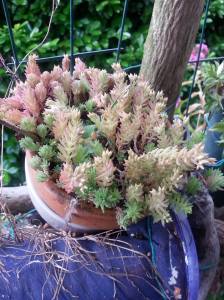
The table below shows the number of succulent species found in some families:
| Family or subfamily | Succulent # | Modified parts | Distribution |
|---|---|---|---|
| Agavoideae | 300 | Leaf | North and Central America |
| Cactaceae | 1600 | Stem (root, leaf) | The Americas |
| Crassulaceae | 1300 | Leaf (root) | Worldwide |
| Aizoaceae | 2000 | Leaf | Southern Africa, Australia |
| Apocynaceae | 500 | Stem | Africa, Arabia, India, Australia |
| Didiereaceae | 11 | Stem | Madagascar (endemic) |
| Euphorbiaceae | > 1000 | Stem and/or leaf and/or root | Australia, Africa, Madagascar, Asia, the Americas, Europe |
| Xanthorrhoeaceae | 500+ | Leaf | Africa, Madagascar, Australia |
| Portulacaceae | ? | Leaf and stem | The Americas, Australia, Africa |
Common Name: catalpa
Type: Tree
Family: Bignoniaceae
Native Range: United States and Canada
Zone: 4 to 8
Height: 40.00 to 70.00 feet
Spread: 20.00 to 50.00 feet
Bloom Time: May to June
Bloom Description: White with purple and yellow interior spotting
Sun: Full sun to part shade
Culture
Easily grown in average, medium to wet, well-drained soils in full sun to part shade. Tolerant of a wide range of soil conditions including both wet and dry soils. Tolerant of seasonal flooding. Prefers moist fertile loams.
Noteworthy Characteristics
Northern catalpa is a medium to large, deciduous tree that typically grows to 40-70’ (less frequently to 100’) tall with an irregular, open-rounded to narrow-oval crown. It is native to a relatively small area extending from western Tennessee, northeastern Arkansas and the lowlands of southeastern Missouri north to southern Illinois and southern Indiana. In Missouri, it typically occurs along streams, bluff bases and in both low and upland woods (Steyermark). Broad ovate to ovate-oblong leaves (to 12” long) are pointed at the tips and rounded to cordate at the bases. Leaves are light green to yellow green above and densely pubescent below. Foliage turns an undistinguished yellow in fall. Flowers can be a real showstopper, however. Bell-shaped, orchid-like white flowers (to 2” long) with purple and yellow inner spotting appear in panicles in late spring (late May to early June in St. Louis). Flowers give way to long slender green seedpods (12-22” long). The seedpods mature in fall to dark brown and then split open lengthwise to release the seeds within. Seedpods give rise to the common name of cigar tree, although they actually are longer and thinner than most cigars. Abundant pods are produced every 2 to 3 years. Bark of mature trees is fissured, prominently ridged and pale gray-brown. The leaves of this species do not emit an unpleasant aroma when bruised as is the case with the similar southern catalpa (Catalpa bignonioides).
Problems
No serious insect or disease problems. Susceptible to verticillium wilt, leaf spots, mildew and twig blight. The larvae (caterpillars) of the catalpa sphinx moth may do considerable damage when feeding on the leaves.

This tree is in my neighbour´s garden. I took this from a second floor balcony so you have some idea of the height of this tree – four stories.
Garden Uses
A mature, symmetrically rounded catalpa tree can be a tree of great beauty, particularly in spring when the foliage is young and the flowers are in bloom. Unfortunately, it is otherwise a rather coarse tree that many believe does not deserve a prominent place in the landscape. Branches are brittle and mature trees infrequently exhibit classic form. Foliage also tends to depreciate as the growing season progresses, the large leaves being subject to damage from hail, wind, insects and sometime disease. It has been widely planted in urban areas as a street tree and lawn tree, and can also be effectively used in the landscape for difficult areas such as moist low spots or dry areas with poor soils.
Water: Medium to wet
Maintenance: Medium
Suggested Use: Shade Tree, Rain Garden
Flower: Showy
Fruit: Showy
Tolerate: Deer, Drought, Clay Soil, Air Pollution
Salix integra (Chinese: 杞柳 qi liu; Japanese: イヌコリヤナギ inukoriyanagi ; syn. S. multinervis Franch. & Savatier) is a species of willow native to northeastern China, Japan, Korea and Primorsky Krai in the far southeast of Russia.
It is a deciduous shrub growing to 2–6 m tall with greyish-green bark and reddish to yellowish shoots. The leaves are 2-10 cm long and 1-2 cm wide; they are pale green both above and below, and unusually for a willow, are often arranged in opposite pairs or whorls of three, rather than alternate. The flowers are produced in small catkins 1-2.5 cm long in early spring; they are brownish to reddish in colour. It is dioecious, with male and female catkins on separate plants.
It is closely related to the European and western Asian Salix purpurea, and has been treated as a variety of it by some authors, as S. purpurea var. multinervis (Franchet & Savatier) Matsumura, or as a subspecies S. purpurea subsp. amplexicaulis (Chaubard) C.K.Schneid
Cultivation and uses
Scientific classification
Kingdom: Plantae
(unranked): Angiosperms
(unranked): Eudicots
(unranked): Rosids
Order: Malpighiales
Family: Salicaceae
Genus: Salix
Species: S. integra
Binomial name: Salix integra
The cultivar ‘Hakuro Nishiki’ (dappled willow) is widely grown as an ornamental plant for its variegated foliage, the leaves strongly mottled with patches and blotches of white and pale pink. As its growth is fairly weak and shrubby, it is commonly sold grafted on the top of a straight stem of another willow.


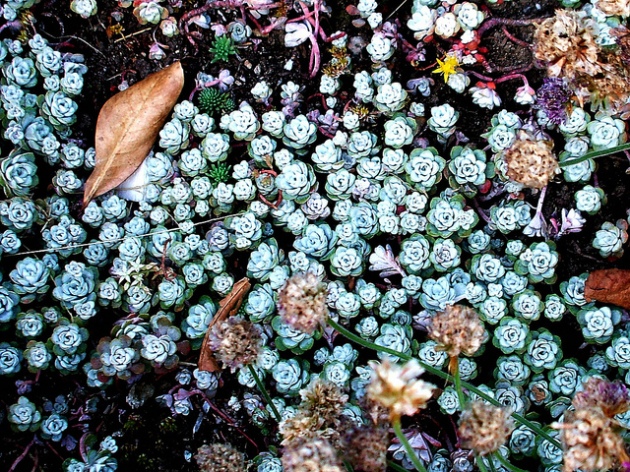
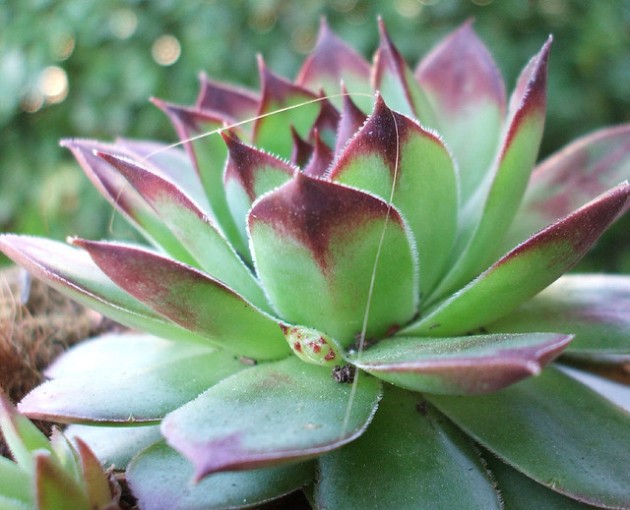
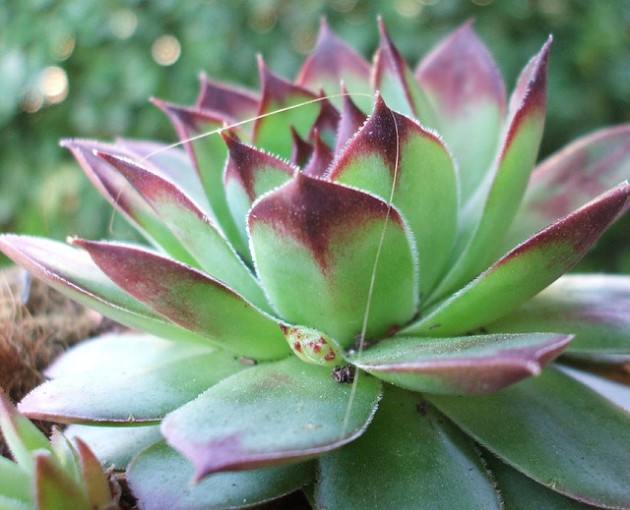
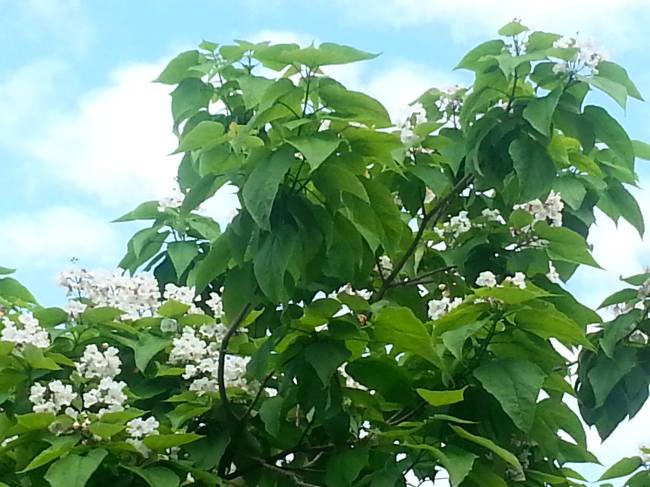
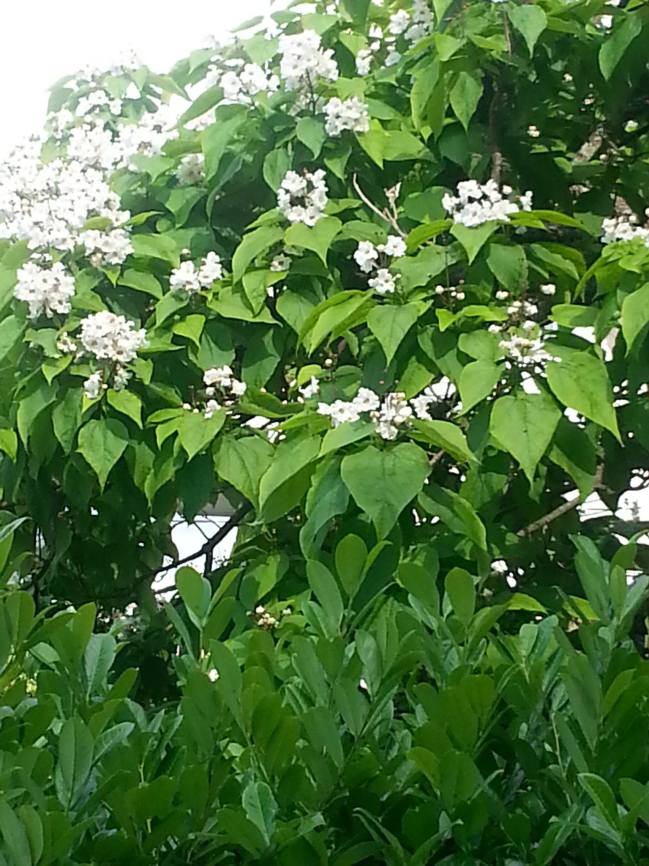
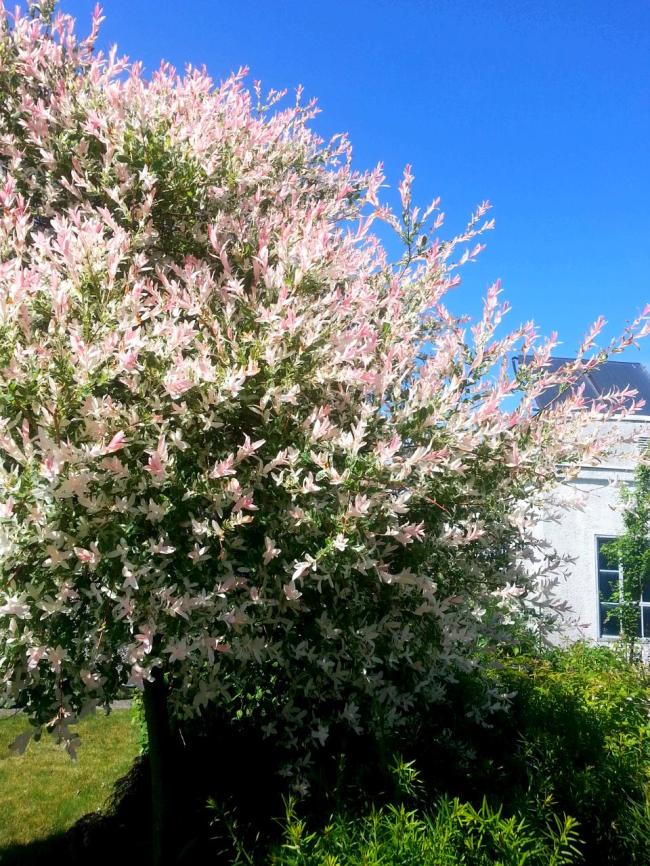
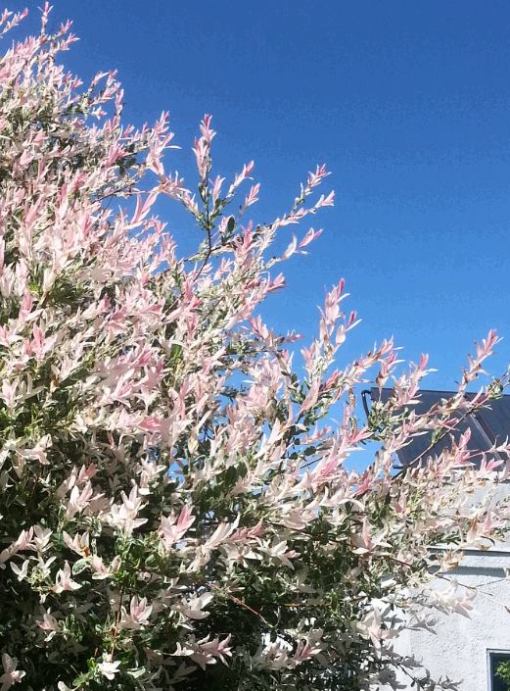
![20170123050651-f09370cbed.[gif-2-mp4.com] 20170123050651-f09370cbed.[gif-2-mp4.com]](https://live.staticflickr.com/428/32472212275_9af8805d25_m.jpg)


